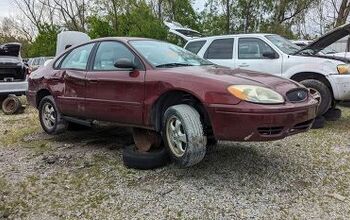NADA, House Committee Press CFPB On Lending Rules
Uncertainty on auto lending rules resulting from the Consumer Financial Protection Bureau’s methodology behind consent orders issued to lenders found overcharging or otherwise misleading minority borrowers has prompted calls from the National Automobile Dealers Association and the House Financial Services Committee for a detailed explanation from the bureau on said methodology.
Automotive News reports complaints made by NADA, the U.S. Chamber of Commerce, the auto finance industry and Congress regarding the CFPB’s enforcement of consumer protections, all citing a lack of clarity behind the enforcement, as NADA general counsel Andy Koblenz explained during a panel discussion at a conference held this week by the U.S. Chamber:
It’s almost like the cop standing by the side of the road, pulling people over for speeding. Someone says, “OK, I want to comply. What’s the speed limit?” And they say, “I’m not going to tell you. After the fact, I’ll look back and I’ll tell you whether you were speeding.” That’s not fair, and it’s ultimately going to drive credit out of the market.
In 2013, the bureau issued guidance upon findings of dealerships charging minority consumers higher dealer reserve than other similar borrowers, proclaiming the action a “disparate impact,” and thus, illegal discrimination.
The specific charge prompted the House Financial Services Committee to send a letter to CFPB director Richard Cordray requesting a thorough explanation on the bureau’s methodology for determining an occurrence of disparate impact, with answers due no later than March 13; the deadline passed with no response, and a subpoena may soon follow.
In defense, CFPB deputy director Steve Antonakes said the bureau has, and intends to use in full, five regulatory tools in fighting disparate impacts: rulemaking; consumer complaints; supervision and examination; enforcement; and consumer education. Further, the bureau itself has said in the past it has used proxies in determining legally protected classes in lending.
However, Capital One chief counsel Andy Navarette — whose employer refunded $140 million for alleged misleading marketing involving product add-ons for credit cards after the bureau issued a consent order to the lender — would like to see the CFPB make “a broader use of the rulemaking tool” in future decisions related to auto lending:
You have 5,000 auto lenders in this country. Tackling individual institutions via supervision or enforcement may change behaviors at those individual companies. But it’s not going to move markets in a way that actually produces consistent rules of the road for the industry.
Seattle-based writer, blogger, and photographer for many a publication. Born in Louisville. Raised in Kansas. Where I lay my head is home.
More by Cameron Aubernon
Latest Car Reviews
Read moreLatest Product Reviews
Read moreRecent Comments
- Bill Wade I think about my dealer who was clueless about uConnect updates and still can't fix station presets disappearing and the manufacturers want me to trust them and their dealers to address any self driving concerns when they can't fix a simple radio?Right.
- FreedMike I don't think they work very well, so yeah...I'm afraid of them. And as many have pointed out, human drivers tend to be so bad that they are also worthy of being feared; that's true, but if that's the case, why add one more layer of bad drivers into the mix?
- ChristianWimmer I have two problems with autonomous cars.One, I LOVE and ENJOY DRIVING. It’s a fun and pleasurable experience for me. I want to drive my cars, not be driven by them.Two, if autonomous cars have been engineered to a standard where they work 100% flawlessly and don’t cause accidents, then freedom-hating governments like the POS European Union or totally idiotic current German government can literally make laws which ban private car ownership in their quest to save the world from climate change bla bla bla…
- SCE to AUX Everything in me says 'no', but the price is tempting, and it's only 2 hours from me.I guess 123k miles in 18 years does qualify as 'low miles'.
- Dwford Will we ever actually have autonomous vehicles? Right now we have limited consumer grade systems that require constant human attention, or we have commercial grade systems that still rely on remote operators and teams of chase vehicles. Aside from Tesla's FSD, all these systems work only in certain cities or highway routes. A common problem still remains: the system's ability to see and react correctly to obstacles. Until that is solved, count me out. Yes, I could also react incorrectly, but at least the is me taking my fate into my own hands, instead of me screaming in terror as the autonomous vehicles rams me into a parked semi


































Comments
Join the conversation
The more rules you set down the quicker the loopholes will start to appear. I appreciate the issue in the case that they're not sure when their gouging of customers and attempting to create profit-driven products far from their fundamental business practices are unethical and illegal but this is a sort of 'non-story' story. You have business lobbyists using a pro-business party to investigate activities of regulators after the regulator more or less did their job. The irony is palpable in so many ways....
"dealerships charging minority consumers higher dealer reserve than other similar borrowers, proclaiming the action a “disparate impact,” and thus, illegal discrimination." That was part of the housing market meltdown 2008 and subprime loans.